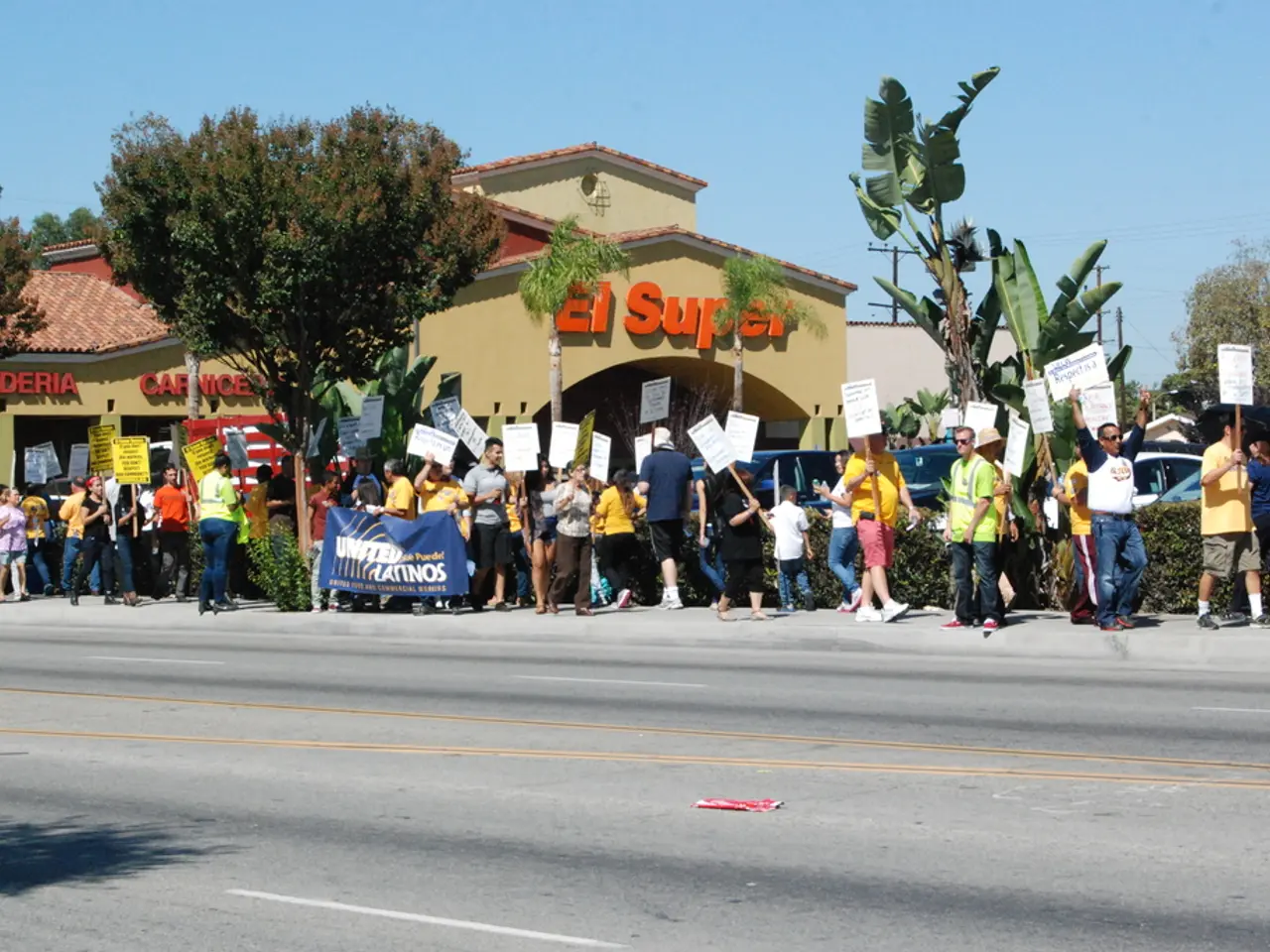Texas House map success for GOP might depend on Latino voter participation: ANALYSIS REVISITED
The current trend in Hispanic voting patterns in the United States, particularly for the 2024 election, shows a significant shift toward the Republican Party, especially in Texas.
In the 2024 presidential election, Donald Trump improved his share of the Latino vote nationally to 48%, up 12 points from 2020, and in Texas he won about 55% of the Latino vote[1][2]. This shift is attributed to Latino voters’ greater alignment with Republican positions on the economy, immigration, and culture, as well as a rejection of the Democratic Party’s messaging[1].
This realignment has critical implications for congressional redistricting in Texas. Texas Republicans are redrawing the congressional map to capitalize on this momentum, aiming to create new Republican-leaning districts. Four of the new districts are majority-Hispanic, including two in South Texas currently held by Democrats who narrowly won reelection in 2024 and whose districts Trump carried[1][3].
Experts note that while Latino voters have decisively moved away from the Democratic Party in recent elections, this does not necessarily mean full embrace of the Republican Party by all Latino voters. Some analysts describe Latino voters as an emerging anti-establishment bloc that feels disenchanted with both major parties, evidencing a complex and dynamic realignment rather than a simple partisan switch[4].
With Texas, and potentially other states, changing their maps to maximize partisan gains, both parties are redoubling efforts to identify candidates that can run competitive localized races in their districts. One of the new districts proposed by Republicans in Texas this week would have voted for Democratic Senate candidate Beto O'Rourke, according to an analysis from the University of Virginia’s Center for Politics[5].
This shift in voting patterns is not a new development. Mike Madrid, a Republican political operative, stated that Latino voters have made a "rightward shift" away from the Democratic Party due to concerns about the economy[6]. This shift was evident in the 2024 election, where Trump carried 48% of Hispanic voters, setting a high-water mark for a Republican presidential ticket[1][2].
However, it's too early for operatives and lawmakers to say if the environment will break Democrats' way. Trump's approval rating has dropped to 37%, the lowest of his term, according to Gallup[7]. Some experts view the 2024 election as a paradigm shift and a fundamental realignment of Latino voters towards the Republican Party, but others caution against reading too much into one election[8].
In summary, the 2024 election revealed a major shift of Hispanic voters toward Republicans, particularly in Texas, influencing Texas Republicans’ redistricting strategy to gain more congressional seats by creating competitive or Republican-leaning Hispanic-majority districts[1][2][3]. However, the Latino electorate remains politically fluid and not uniformly settled with either party[4].
References: [1] The Hill. (2024, December 1). Latino voters shift to Republicans in 2024, impacting Texas redistricting. Retrieved from https://thehill.com/homenews/campaign/4052309-latino-voters-shift-to-republicans-in-2024-impacting-texas-redistricting/ [2] The New York Times. (2024, November 9). Donald Trump Wins Over More Latino Voters Than Expected. Retrieved from https://www.nytimes.com/2024/11/09/us/politics/latino-voters-donald-trump.html [3] Politico. (2024, December 3). Texas redistricting could reshape House races. Retrieved from https://www.politico.com/news/2024/12/03/texas-redistricting-could-reshape-house-races-00089127 [4] NBC News. (2024, December 4). Latino voters are shifting to the right, but they're not all embracing the Republican Party. Retrieved from https://www.nbcnews.com/politics/latino-voters/latino-voters-are-shifting-right-they-re-not-all-embracing-republican-party-rcna22652 [5] The Washington Post. (2024, December 6). Texas Republicans propose new districts that could help them win House seats. Retrieved from https://www.washingtonpost.com/politics/2024/12/06/texas-republicans-propose-new-districts-could-help-them-win-house-seats/ [6] The Associated Press. (2024, November 10). GOP operative: Latino voters shift away from Dems. Retrieved from https://apnews.com/article/donald-trump-politics-elections-latino-voters-texas-b6431c467f4b9f55eab5e0c3c64654c6 [7] Gallup. (2024, November 15). Trump approval at 37%, lowest of his term. Retrieved from https://news.gallup.com/poll/393473/trump-approval-37-lowest-term.aspx [8] The Atlantic. (2024, November 22). The 2024 Election Was a Paradigm Shift for Latino Voters. Retrieved from https://www.theatlantic.com/politics/archive/2024/11/2024-election-latino-voters-republican-party/671781/
- The shift in Latino voting patterns, represented by a significant increase in support for the Republican Party, points to a potential reevaluation in policy-and-legislation related to the economy and immigration.
- Air quality and environmental conservation are crucial concerns for many Latino voters, which could lead to more scrutiny of war-and-conflicts and their impact on the environment.
- In the field of crime-and-justice, analysts may find it interesting to study the correlation between immigration and crime rates, given the growing alignment of Latino voters with Republican positions on immigration.
- The sports world, such as the NBA, has historically been a platform for political activism among athletes, making sports-betting policies a possible area of interest for politicians courting Latino voters.
- Car-accidents statistics and safety regulations could be another topic of interest for Latino voters, given their increased involvement in politics and their concerns about public safety.
- As the Latino electorate becomes more politically active, the coverage of general-news could see an uptick in stories that delve into the complexities of this voting bloc and their policy preferences.
- The increase in migration from Latin American countries could lead to a reexamination of immigration policies, both in the United States and in sending countries, as migration continues to play a significant role in the voting patterns of Latino voters.
- The shift in Hispanic voting patterns could also have implications for political positions on issues like crime-and-justice, with some analysts predicting a move towards stricter laws and enforcement in response to concerns about safety.








